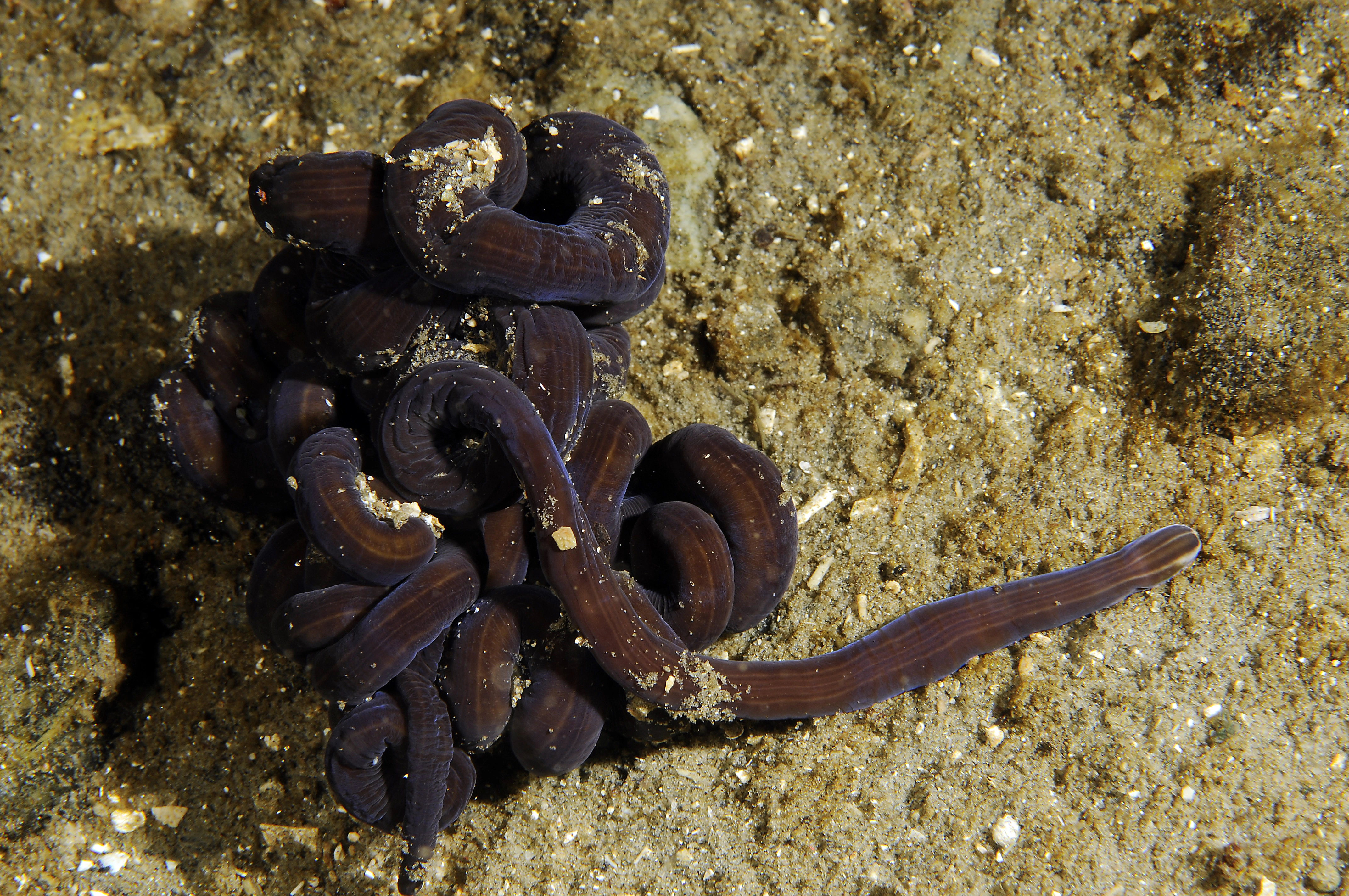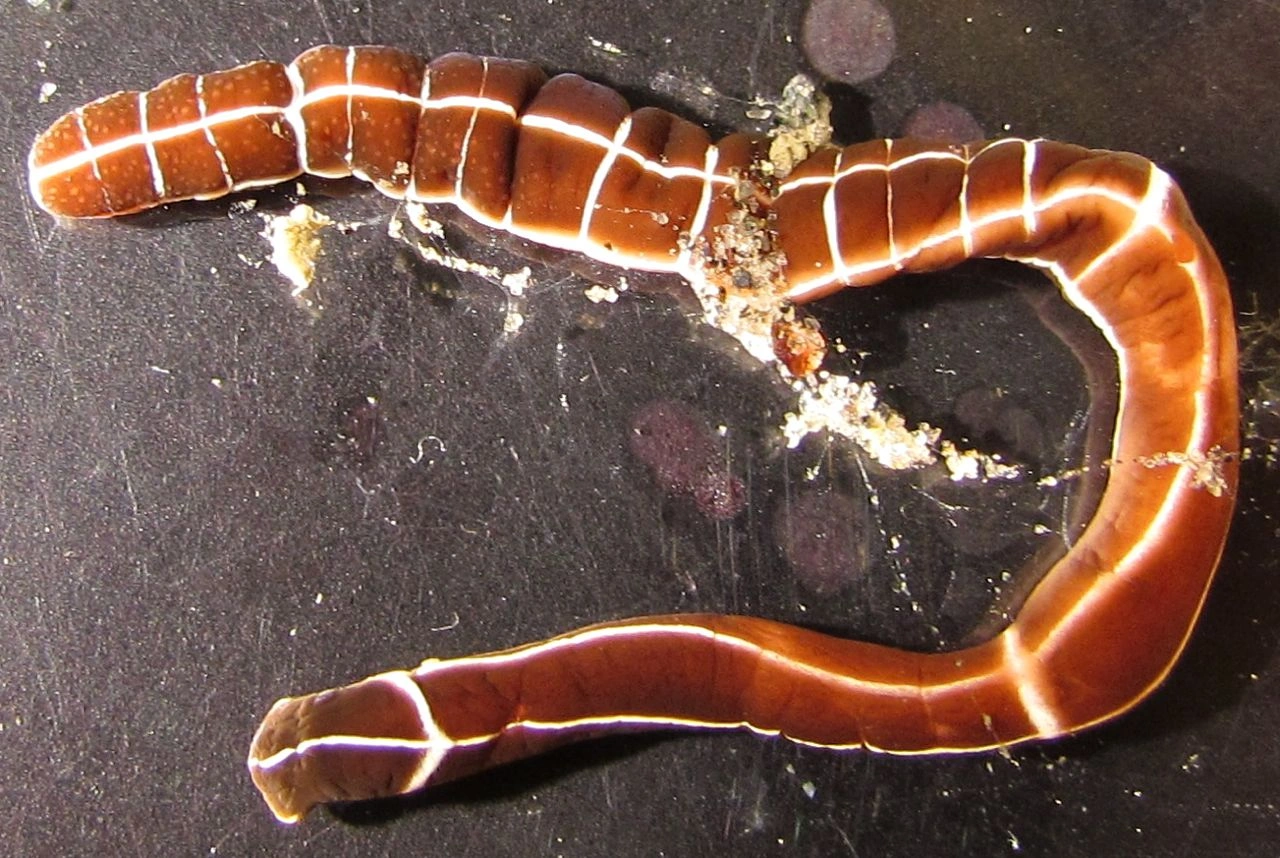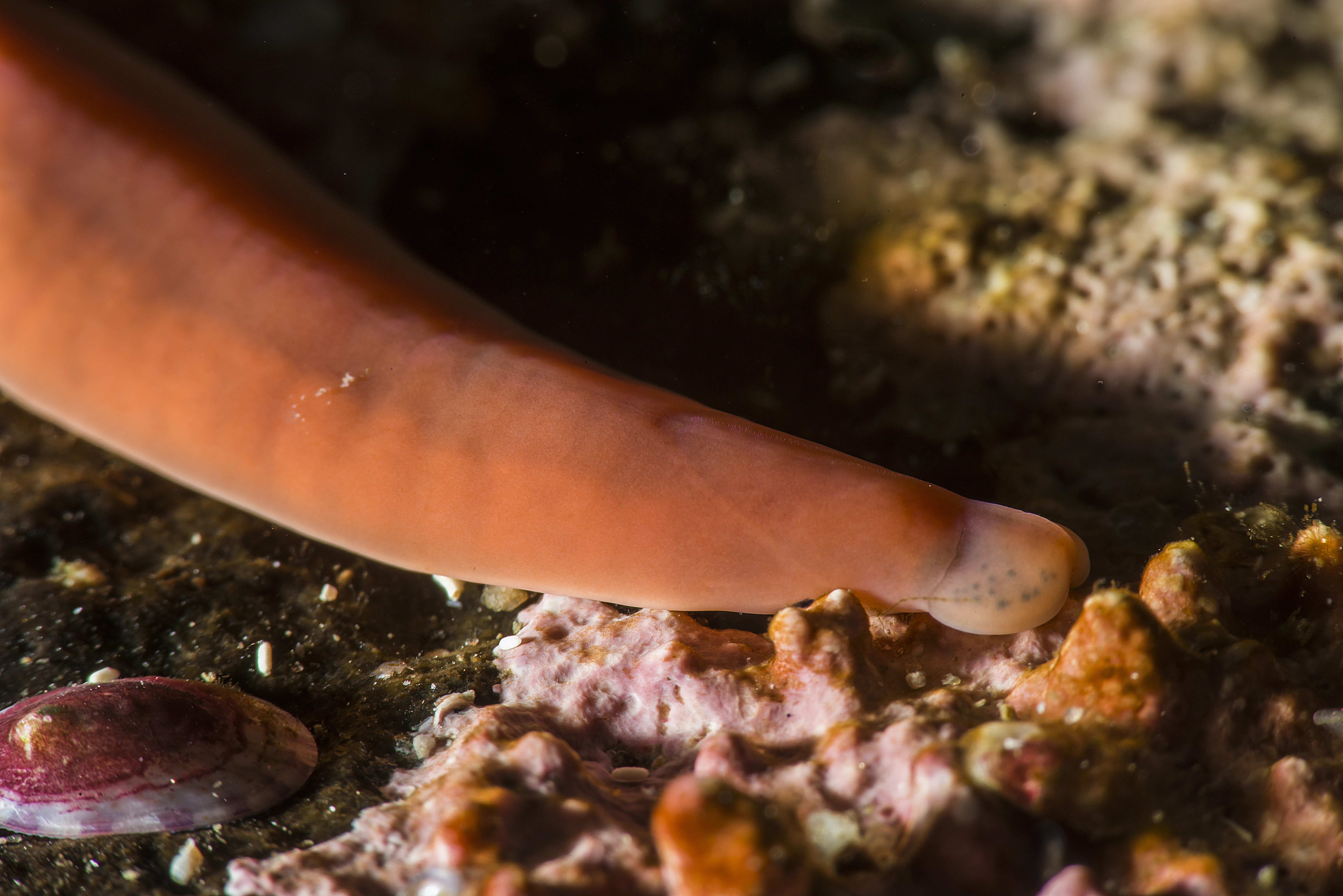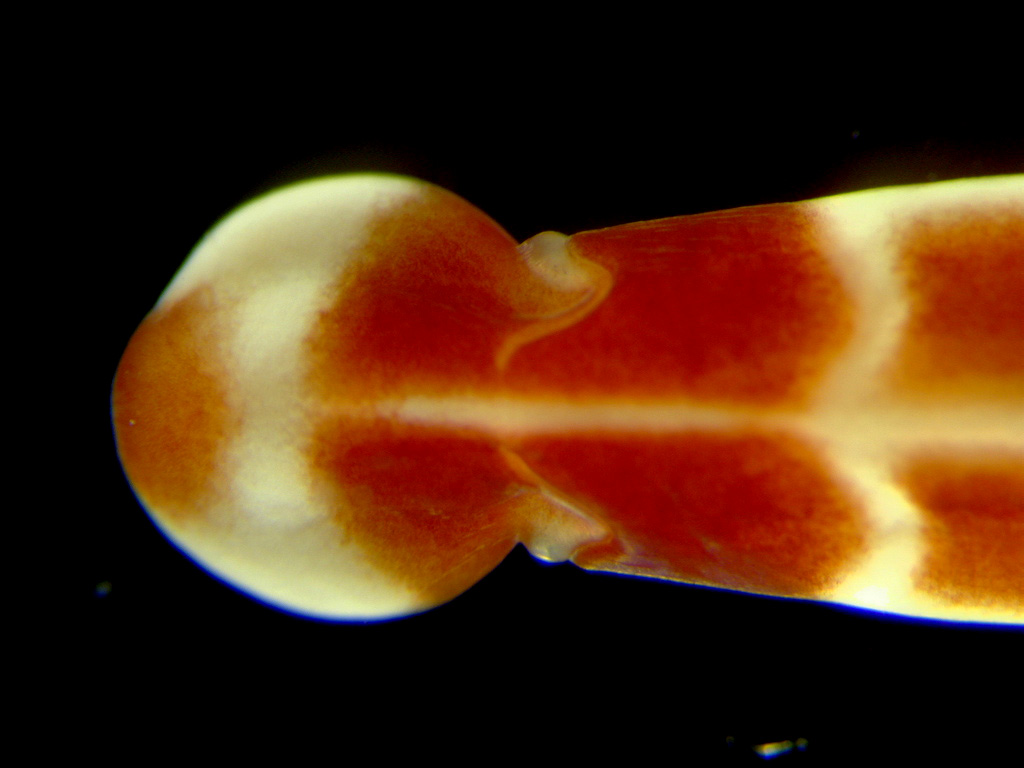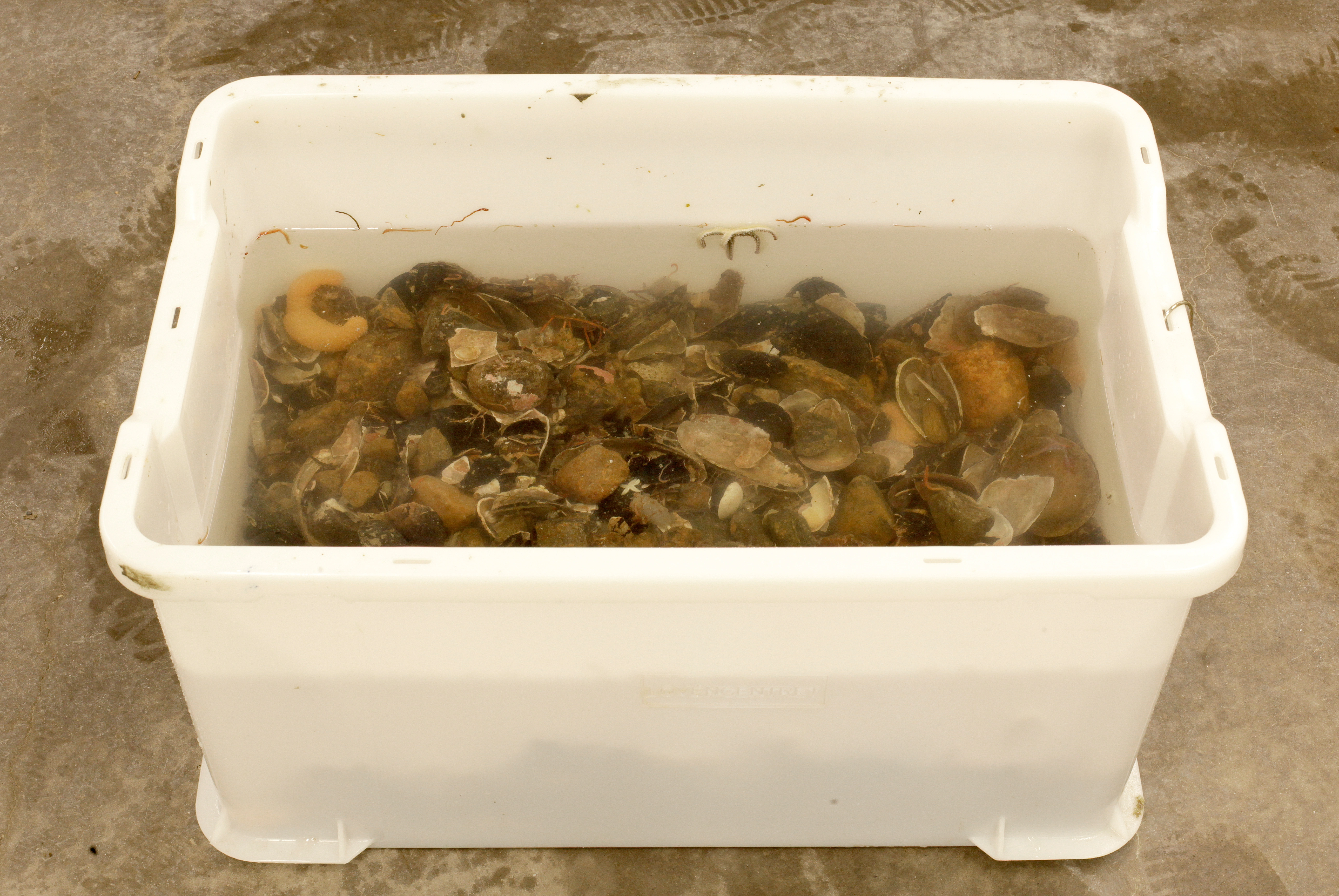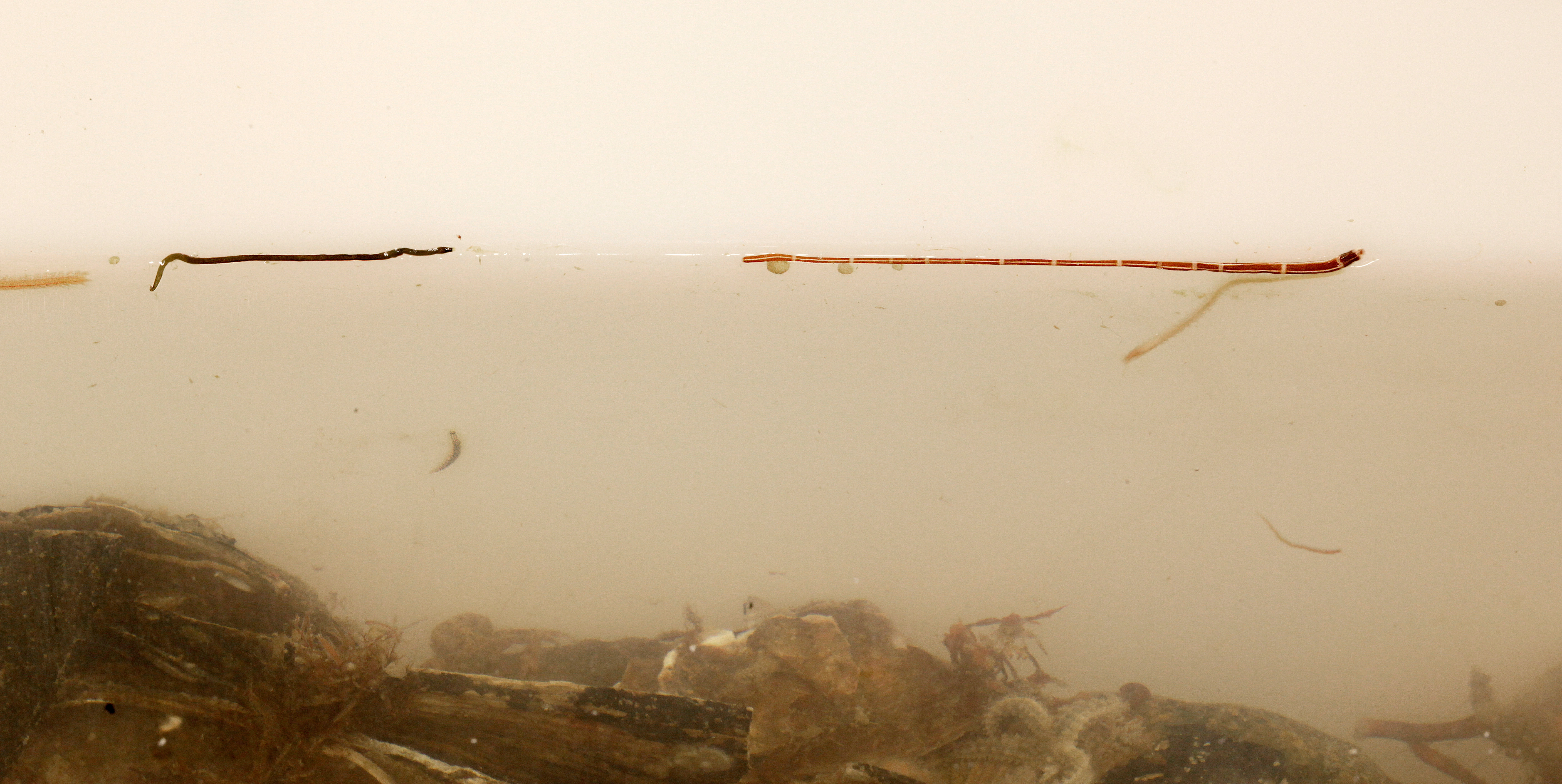Ribbonworms Nemertea
Nemerteans are vermiform animals with long, slender, soft, and contractile bodies covered by a ciliated epidermis. The name Nemertea is associated with the Greek seanymph Nemertes – daughter to Nereus, the God of Seas, and his wife Doris. In common, they are called “Ribbonworms”, referring to their ribbon- or threadlike looks.
Nemertea is sometimes considered a minor phylum, but it is widespread and also contains the longest metazoan ever recorded, Lineus longissimus, which can measure more than 30 m in length (McIntosh, 1873–1874). It also contains a large number of small species, of which some are interstitial and constitute an important component of the meiofauna, such as for example some species in the genera Cephalothrix, and a wide range of sizes between these two extremes.
Nemerteans are characteristically capable of extreme body contraction and extension, and most species secrete mucus containing different cocktails of paralyzing toxins. In general, they are active predators hunting living prey such as small crustaceans, molluscs or polychaetes. The major morphological feature of the phylum Nemertea is an eversible proboscis contained in a dorsal fluid-filled tubular chamber (the rhynchocoel) that extends above the gut. This proboscis can be armed with one or several stylets, and sometimes the stylet has a sac of poison attached to it. The proboscis is used for catching prey. Many nemertean species are brightly colored, and some have spectacular patterns of spots, stripes or lines, while other species are dull an anonymous. Intraspecific variation in pigmentation exists in some species while other species are very conserved in color aspects.
General systematics
The phylum is currently divided into two classes: Anopla and Enopla, and further into three separate groups; Heteronemertea, Palaeonemertea and Hoplonemertea (see table for characters). The main features used for classification are muscle layers in the body wall, armament of proboscis, and placement of mouth opening. Current figures indicate that the Anopla accounts for approximately 38% of the known genera and 44% of the named species, and Enopla for 62% and 56%, respectively.
|
Character |
Class Anopla (Heteronemertea & Palaeonemertea) | Class Enopla (Hoplonemertea) |
|---|---|---|
| Mouth | Mouth and proboscis pore separate, mouth ventral | Mouth and proboscis pore in common front opening |
| Armament | No stylet | Stylet/-s on proboscis |
Sampling, handling
Nemerteans are common animal in most marine environments, but they rarely show up in traditional inventories. Their bodies are soft and it is easy to destroy them before finding them. One successful method is to collect bentic material with a dredge (figure) put material (algae, rocks, shells, gravel, mud,…) covered with sea water in a tray or a wide bucket for 2-40 hours to deoxygenate. When the animals suffer from the lack of oxygen they crawl up to the surface and are easily collected with a pipette. Some species are very tolerant to deoxygenation and hence take along time, sometimes a couple of days, before showing up.
For histological sections, it is important to properly anesthetize the animal before fixation to minimize contractions (which will distort anatomical characters). MgCl2 is recommended. A common fixative for nemerteans is Bouin´s fluid, and also 3-4% formalin. Ethanol is required for later DNA extractions, but is less good for histology. Another good fixative for RNA and DNA studies is RNAlater, which is easy to carry around (not being neither toxic nor inflammable) and especially suited for fieldwork. Longterm storage of specimens preserved for DNA should be kept in freezer.
Identification
Nemerteans should always be studied alive when possible, and characters to be observed are presence/absence of eyes, number and pattern if present, colour, position of mouth, caudal cirrus, position of eyes, furrows and slits.
Only adult nemerteans possess the morphological characters reflected in existing identification tools. Juveniles are in most cases not possible to identify securely. Some species can be roughly identified by a combined knowledge of shape, size and colour (and, of course, sampling site). To be sure of the species identification one has to go into details. First thing to look for is cephalic slits. These are located on the sides of the head, and are present only in the order Heteronemertea. In Heteronemertea the mouth is always separate from the proboscis pore and should always be visible on the ventral side. A caudal cirrus can also be present in heteronemerteans, but not in other groups. If cephalic slits are lacking, there can be cephalic furrows (Hoplonemertea). More characters to be observed are presence/absence of eyes, number and eye placement pattern if present, colour, position of mouth, the presence of a frontal organ and the cerebral ganglia. In many species it is possible to see through the dorsal body wall and estimate the length of the rhynchocoel. The proboscis of hoplonemerteans are armed with one stylet that can be detected in a microscope. The stylet is often very species-specific.
References
Andrade, SCS., Strand, M., Schwartz, M., Chen, H., Kajihara, H., Von Döhren, J., Shichun Sun, Junoy, J., Thiel, M., Norenburg, JL., Turbeville, JM., Giribet, G. & Sundberg P. 2011. Disentangling ribbon worm relationships: multi-locus analysis supports traditional classification of the phylum Nemertea. Cladistics 27: 1-19.
Gibson, R. 1982. British Nemerteans. Keys and notes for the identification of the species. Synopses of the British Fauna (New Series), ed by D. M. Kermack and R. S. K. Barnes, No. 24.—With 50 figs, 212 pp. Cambridge: Cambridge University Press 1982. ISBN 0 521 246199
Punnett, MA. 1903. On the Nemerteans of Norway. Bergens Museums Aarbog No 2.
Strand, M., Herrera-Bachiller, A., Nygren, A. & Kånneby, A. 2014. What are the useful characters for ribbon worm descriptions? Journal of the Marine Biological Association of the United Kingdom 94:317-330.
Strand, M. & Kindvall, O. 2015. Nytt ljus på okända slemmaskar – en utvärdering av fältarbetet inom de svensk-norska artprojekten. Fauna och Flora 110:2 (juni).
Strand, M., Samuelsson, H. & Sundberg, P. 2010. Nationalnyckeln: Stjärnmaskar-Slemmaskar. Förlag: Artdatabanken, SLU, Uppsala. App 80 species (Swedish) of nemerteans and sipunculans with Key facts in English.
